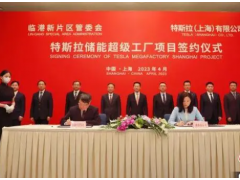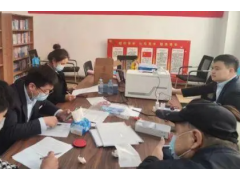On May 11, 2023, Chinese Minister of Commerce Wang Wentao and Ecuadorian Minister of Production, Foreign Trade, Investment and Fisheries Prado formally signed the Free Trade Agreement between the Government of the People's Republic of China and the Government of the Republic of Ecuador (hereinafter referred to as China-Ecuador Free Trade Agreement). In order to allow the public and enterprises to have a more comprehensive and accurate understanding of the China-Ecuador Free Trade Agreement, the head of the International Department of the Ministry of Commerce gave a detailed introduction and interpretation of the background and content of the China-Ecuador Free Trade Agreement.
Q: What is the significance of the signing of the China-Ecuador Free Trade Agreement?
A: The China-Ecuador Free Trade Agreement is the 20th free trade agreement signed by China. Ecuador has become China's 27th free trade partner and China's fourth free trade partner in Latin America after Chile, Peru and Costa Rica. In 2022, the bilateral trade volume between China and Ecuador will reach 13.1 billion US dollars, a year-on-year increase of 19.7%, and the growth rate has exceeded double digits for two consecutive years. China is Ecuador's second largest trading partner. Ecuador is an important economic and trade partner of China in Latin America, a source of imports of agricultural, fishery, energy and mineral products, and an important partner in the joint construction of the "Belt and Road". The signing of the China-Ecuador Free Trade Agreement is a specific measure to implement the "promoting high-level opening up" proposed by the 20th National Congress of the Communist Party of China, and it is the latest practice in expanding the network of high-standard free trade zones facing the world.
The China-Ecuador Free Trade Agreement will create a more favorable, convenient, transparent and stable business environment for enterprises of the two countries, further stimulate the potential of trade and investment cooperation between the two countries, promote the all-round improvement and upgrading of China-Ecuador economic and trade cooperation, and promote the continuous and stable bilateral trade , diversified development, and continuously improve the well-being of the people and enterprises of the two countries. At the same time, the signing of the China-Ecuador Free Trade Agreement also reflects the common will and firm determination of the two countries to promote trade liberalization and facilitation, and sends a positive signal to the international community to support multilateralism and free trade and promote the stable recovery of the global economy.
Q: Please briefly introduce the negotiation process and main content of the China-Ecuador Free Trade Agreement.
A: Negotiating and signing the China-Ecuador Free Trade Agreement is an important consensus reached by the leaders of the two countries. The negotiations will start in February 2022. The Chinese side will be led by the Ministry of Commerce, the Ecuadorian side will be led by the Ministry of Production, Foreign Trade, Investment and Fisheries, and all relevant departments will participate. The negotiating teams of the two sides held a total of 1 ministerial-level meeting, 3 department-level first meetings, and more than 40 consultations with working groups in various fields within a year through video, and finally announced the end of the negotiations in February 2023. Since then, the two parties have jointly completed the legal review and translation of the text of the agreement and other preparatory work, and performed their respective domestic procedures. On May 11, 2023, the China-Ecuador Free Trade Agreement was officially signed.
The agreement consists of a preamble and 17 chapters. In the field of trade in goods and related rules, it includes 6 chapters including national treatment of goods and market access, rules of origin and implementation procedures, customs procedures and trade facilitation, trade remedies, sanitary and phytosanitary measures, and technical barriers to trade. In other fields, there are 4 chapters including investment cooperation, e-commerce, competition, and economic cooperation. In addition, the agreement also includes 7 legal and institutional chapters including initial clauses, general definitions, transparency, dispute settlement, management, exceptions, and final clauses, as well as national treatment and exceptions to import and export restrictions, tariff commitment schedule, Andean price range system, product-specific There are 6 appendices, including rules of origin, certificates of origin, and arbitration procedure rules.
Q: What arrangements have the two sides made in terms of tariff concessions for trade in goods?
A: In terms of tariff concessions for trade in goods, the two sides have reached a mutually beneficial and win-win result on a high-level basis. According to the concession arrangement, China and Ecuador will mutually cancel tariffs on 90% of tax items, of which about 60% of tax items will cancel tariffs immediately after the agreement takes effect. In terms of specific products, China's zero-tariff products will fully cover Ecuador's main export products. After the agreement takes effect, when Ecuador's bananas, white shrimp, fish, fish oil, fresh flowers and dried flowers, cocoa and coffee enter the Chinese market, Tariffs will be gradually reduced from the current 5%-20% to zero. At the same time, Ecuador will also implement zero tariffs on China's main export products. After the agreement takes effect, most products such as plastic products, chemical fibers, steel products, mechanical appliances, electrical equipment, furniture decoration, automobiles and parts produced in China will enter Ecuador. Tariffs will be gradually reduced and eliminated on the basis of the current 5%-40%.
Q: What is the content of the China-Ecuador Free Trade Agreement in terms of rules of origin, customs procedures and trade facilitation?
A: Regarding the place of origin, the agreement mainly stipulates two aspects. The first is the rules of origin, which have regulations on origin standards, cumulative and regional value components, minor content, minor processing and handling, interchangeable materials, neutral components, packaging materials and containers, spare parts and tools, complete sets of goods, and direct transportation Sexual content is regulated in detail. The second is the implementation procedure of the place of origin, which makes specific requirements for procedural content such as the format, issuance and preservation of the place of origin document, the obligations of the importer, the verification of the place of origin, and the electronic exchange of data of the place of origin.
Regarding customs procedures and trade facilitation, on the basis of WTO rules, the agreement makes specific provisions on facilitation, tariff classification, transparency, pre-ruling, risk management, and release of goods to simplify customs clearance procedures as much as possible and provide enterprises with efficient Fast service. At the same time, the two sides will further deepen customs cooperation and strengthen information exchange, communication and coordination.
Q: What does the China-Ecuador Free Trade Agreement contain in terms of trade remedy?
A: While implementing high-level opening-up, the agreement has also made relevant arrangements in terms of trade remedies, setting a "safety valve" for market opening. The agreement reaffirms the relevant rights and obligations of the two parties under the WTO, and provides anti-dumping and countervailing measures, global safeguard measures, bilateral safeguard measures, procedures, standards, investigation procedures and transparency, interim measures, notifications and consultations for the implementation of safeguard measures. , compensation, etc., have further made detailed provisions.
Question: What are the main provisions of the China-Ecuador Free Trade Agreement in terms of sanitary and phytosanitary measures and technical barriers to trade?
A: The two sides agreed to further strengthen the communication and cooperation between the competent authorities of the two countries in the fields of sanitary and phytosanitary measures and technical barriers to trade on the basis of WTO rules. In terms of sanitary and phytosanitary measures, the agreement reaffirms the relevant rights and obligations of both parties under the WTO, and further provides for risk analysis, regionalization, equivalence, transparency and other aspects. In terms of technical barriers to trade, on the basis of reaffirming the relevant rights and obligations of both parties under the WTO, the agreement further makes specific provisions on standards, equivalence, conformity assessment, transparency, information exchange, and technical cooperation.
Q: For other areas, what arrangements has the China-Ecuador Free Trade Agreement made?
Answer: In the field of investment cooperation, the two sides agreed to deepen cooperation in investment promotion and investment facilitation, mainly including sharing and exchanging investment information, improving the transparency of the investment environment, and simplifying the application and approval procedures. At the same time, environmental measures, corporate social responsibility, etc. and other sustainable development terms.
In the field of e-commerce, the two parties made provisions on transparency, electronic transactions, electronic authentication and signature, online consumer protection, personal information protection, paperless transactions, unsolicited commercial electronic information, network equipment, network security cooperation, data innovation, etc. , to encourage enterprises of the two countries, especially small and medium-sized enterprises, to explore markets through e-commerce.
In the field of competition, on the basis of acknowledging the independence of competition law enforcement, the two sides reached agreement on law enforcement principles, transparency, law enforcement cooperation, notification, consultation, information exchange, technical cooperation, consumer protection, etc. A favorable business environment will promote trade and investment exchanges between enterprises of the two countries.
In the field of economic cooperation, the two sides agreed to encourage government departments, industries and relevant institutions to cooperate in the fields of agriculture, fishery and aquaculture, small and medium-sized enterprises, export promotion, tourism, science and technology and innovation, education, culture, traditional medicine, and the environment.
In addition, the two sides will further conduct negotiations on areas of common interest in the future to upgrade the free trade agreement.
Q: When is the China-Ecuador Free Trade Agreement expected to take effect?
A: After the signing of the agreement, the two sides will carry out their respective domestic legal approval procedures to promote the early entry into force and implementation of the agreement. We will publish the text on the China Free Trade Area Service Network (http://fta.mofcom.gov.cn) for public inquiry and reference.




